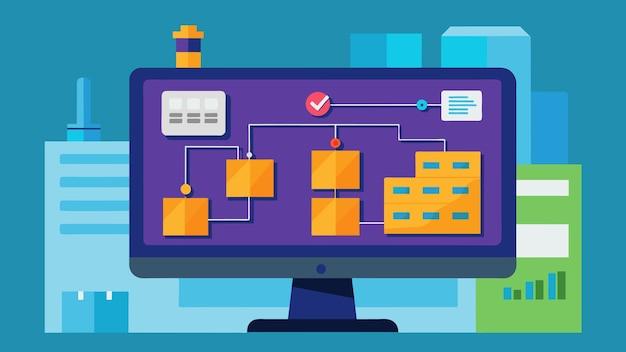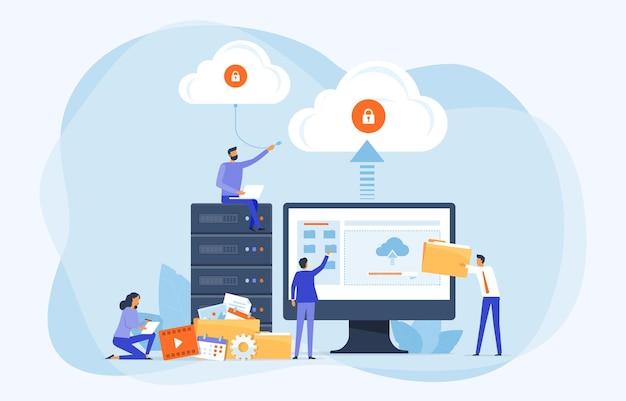DevOps Infrastructure Automation: A Perfect Match

Audio : Listen to This Blog.
In the rapidly evolving world of IT, ensuring that infrastructure remains reliable, scalable, and efficient is paramount. As someone deeply embedded in the tech landscape, I’ve witnessed firsthand how DevOps infrastructure automation has revolutionized how we manage and deploy applications, particularly through cloud infrastructure. This blog dives into the intricacies of DevOps infrastructure automation, exploring how it streamlines operations, enhances productivity, and provides a robust framework for managing complex environments.
The Fundamentals of DevOps Infrastructure Automation
To begin with, let’s define DevOps infrastructure automation. At its core, DevOps is a set of practices that bridge the gap between development (Dev) and operations (Ops). It emphasizes collaboration between development and operations teams, continuous integration, continuous delivery (CI/CD), and the automation of manual processes. When we talk about DevOps infrastructure automation, we refer to automated IT infrastructure management using tools, scripts, and software to achieve consistent and reproducible environments.
Why Automation is Crucial in DevOps

DevOps practices are not just a luxury; they’re a necessity. Manual processes can’t keep up with the increasing complexity of modern applications and the need for rapid deployment. Here are a few reasons why automation is indispensable:
Ensuring Consistency Across Environments
One of the fundamental advantages of DevOps infrastructure automation is ensuring consistency across all environments. By defining infrastructure as code (IaC) on cloud platforms like AWS and Azure, we can create reproducible configurations that are identical in development, testing, staging, and production environments.
Tools like Ansible and Puppet allow us to script every detail of our environment, from server configurations to network settings, thereby eliminating the infamous “it works on my machine” problem. Automated infrastructure ensures uniformity, reducing the chances of environment-specific issues and streamlining debugging processes.
Accelerating Deployment Speed

Speed is critical in today’s competitive landscape, and automation significantly accelerates deployment. Traditional methods of manual configuration and deployment are time-consuming and prone to delays. Infrastructure automation tools, including those for server provisioning, configuration management, automated builds, code deployments, and monitoring, can automate the entire build, test, and deploy cycle with continuous integration and continuous deployment (CI/CD) pipelines powered by tools like Jenkins, GitLab CI, and CircleCI.
This leads to rapid iterations and a much shorter time-to-market for new features and fixes. Automated deployment scripts ensure that once code changes are committed, they are automatically tested and deployed, allowing teams to release updates several times a day if needed.
Achieving Unmatched Scalability

Scalability is another area where DevOps infrastructure automation shines. Scaling resources up or down based on demand requires significant human effort in a manual setup. However, we can set up auto-scaling rules with automation using tools like AWS Auto Scaling and Kubernetes Horizontal Pod Autoscaler.
These tools monitor resource usage and automatically provision or decommission instances based on predefined metrics. This dynamic scaling ensures optimal resource utilization, cost efficiency, and the ability to handle varying workloads without manual intervention.
Minimizing Errors with Automation

Infrastructure monitoring is crucial to automating repetitive tasks within the DevOps pipeline. Manual processes are inherently error-prone due to the possibility of human oversight. By leveraging automation tools such as Chef and Terraform, we can script these tasks, thereby removing the human element and significantly minimizing the risk of errors.
Automated configuration management ensures that every step is executed precisely as defined, consistently across all deployments. Furthermore, automated testing frameworks like Selenium and JUnit can be integrated into CI/CD pipelines to catch bugs early, further enhancing the reliability of deployments.
Tools and Technologies Driving DevOps Infrastructure Automation
DevOps tools and several other technologies underpin the automation of DevOps infrastructure. Below are some of the key players:
Configuration Management Tools

Configuration management tools like Ansible, Puppet, and Chef are the backbone of infrastructure automation. These tools allow you to define your infrastructure as code (IaC), making it easy to manage and replicate environments.
Ansible: Simplicity and Power in Automation
Ansible is an agentless automation tool requiring no additional software (agents) installed on its managed nodes. This advantage is significant because it reduces overhead and simplifies the initial setup process. Ansible operates using secure shell (SSH) for Linux/Unix-based systems or PowerShell for Windows systems as its default method for communication. The simplicity of Ansible is further enhanced by its use of straightforward YAML files, called playbooks, to define automation tasks.
In terms of functionality, Ansible provides a rich set of modules to cover a wide range of automation tasks. Ansible’s modules are robust and versatile, from provisioning servers and installing applications to configuring network devices and deploying applications. For instance, users can leverage the yum module to install packages or the service module to start services on remote hosts, all defined within simple YAML syntax.
The idempotency of Ansible’s operations ensures that applying the same playbook multiple times will not change the system state after the first application, preventing unintended side effects. This makes Ansible a powerful tool for achieving consistent and repeatable configurations across different environments.
Puppet: Declarative Configuration Management
Puppet excels at automating infrastructure management through its declarative Domain Specific Language (DSL). Puppet’s declarative nature means that you describe your system’s desired state, and Puppet ensures that state is achieved. This approach abstracts the complexity of tasks, focusing instead on what needs to be done. While powerful, Puppet’s DSL is designed to be human-readable, making it easier for developers and system administrators to collaborate on configuration management tasks.
Moreover, Puppet’s Resource Abstraction Layer (RAL) provides a consistent interface for managing resources across various operating systems and environments, ensuring that your configurations are portable and scalable. Puppet Forge, a repository of pre-built modules, allows users to quickly extend Puppet’s functionality by leveraging community-contributed content. These modules cover various applications and services, enabling rapid deployment and configuration.
Additionally, Puppet’s robust reporting and compliance capabilities offer detailed insights into changes made across your infrastructure, helping to maintain compliance with organizational policies and regulatory requirements. This makes Puppet an invaluable tool for organizations looking to automate, standardize, and secure their infrastructure management processes.
Chef: Ruby-Based Infrastructure As Code
Chef employs Ruby as its scripting language, allowing for highly customizable and flexible infrastructure automation. Ruby enables users to write complex logic and conditionals directly within their configuration scripts, known as recipes. Recipes are collections of resources—such as packages, services, and files—that should be managed in a specific order to achieve the desired state of a system. These recipes are grouped into cookbooks, encapsulating all related configurations, making them easy to maintain and reuse.
The Chef ecosystem includes several components that work together to streamline infrastructure management. The Chef Workstation is the local environment where recipes and cookbooks are developed and tested before being uploaded to the Chef Server. The Chef Server is a central hub that stores cookbooks, policy definitions, and metadata, distributing these configurations to nodes as they check-in. Ohai, another integral component, gathers system information and provides it to Chef, enabling dynamic adjustments based on the state of each node.
Chef also benefits from a vibrant community and a wealth of pre-built cookbooks on the Chef Supermarket, allowing users to automate common tasks quickly and efficiently. With its robust features and extensibility, Chef empowers organizations to manage their infrastructure as code, ensuring consistency, scalability, and reliability across their environments.
Containerization and Orchestration

Containers have become synonymous with modern application deployment thanks to their lightweight nature and consistency across environments. Docker and Kubernetes are the titans in this domain.
- Docker: Allows you to package applications and their dependencies into containers, ensuring consistency across different environments.
- Kubernetes: An orchestration tool that manages containerized applications at scale. It automates the deployment, scaling, and operations of application containers.
Infrastructure as Code (IaC)
Infrastructure as Code (IaC) is a practice where infrastructure configurations are written and managed as code. Terraform and AWS CloudFormation are prime examples.
- Terraform: An open-source IaC tool that allows you to define infrastructure resources in a high-level configuration language and deploy those resources across multiple cloud providers.
- AWS CloudFormation: A service that helps you model and set up your Amazon Web Services resources using templates.
Implementing DevOps Infrastructure Automation: A Step-by-Step Guide

Implementing automation in your DevOps workflow is a multi-step process. Here’s a practical guide on how to start:
Step 1: Assess Your Current Infrastructure
Before diving into automation, take stock of your current infrastructure. Understand the existing processes, identify bottlenecks, and determine which tasks are ripe for automation.
Step 2: Choose the Right Tools
Select the tools that best suit your needs. Consider factors like ease of use, scalability, community support, compatibility with your tech stack, and integration with a version control system.
Step 3: Define Your Infrastructure as Code
Use IaC tools to define your infrastructure. Start by writing configuration files that describe your desired state. For instance, using Terraform, you’ll write .tf files to define resources like servers, databases, and networking components.
Step 4: Integrate with CI/CD Pipelines
Integrate your infrastructure code into your CI/CD pipelines. This ensures that any changes to the infrastructure are tested and deployed automatically. Tools like Jenkins, GitLab CI, and CircleCI can help streamline this process.
Step 5: Monitor and Iterate

Automation isn’t a one-and-done deal. Continuously monitor your infrastructure and automation scripts. Use monitoring tools like Prometheus, Grafana, and ELK Stack to gain insights and iterate on your automation processes.
Real-World Applications and Benefits
Having explored the theory, let’s look at real-world applications and the tangible benefits of DevOps infrastructure automation.
1. Continuous Integration and Continuous Deployment (CI/CD)

CI/CD pipelines are the lifeblood of modern software development. By automating the build, test, and deployment stages, teams can ensure frequent and reliable releases. Tools like Jenkins, Travis CI, and GitHub Actions enable seamless CI/CD integration with automated infrastructure management.
2. Auto-Scaling
Imagine a scenario where your application experiences a sudden surge in traffic. Manually provisioning additional servers would be impractical. With automation, you can set up auto-scaling rules that trigger the automatic creation of new instances based on demand. AWS Auto Scaling and Google Cloud’s autoscaler are excellent tools.
3. Disaster Recovery

Automated infrastructure makes disaster recovery significantly more manageable. In the event of a failure, computerized scripts can quickly spin up new instances and restore services with minimal downtime. This ensures business continuity and reduces the impact of unforeseen outages.
Addressing Common Challenges
While the benefits of DevOps infrastructure automation are clear, it’s essential to be aware of potential challenges and how to address them.
1. Security Concerns

Automating infrastructure can introduce security risks if not handled correctly. Ensure that your automation scripts follow best practices, such as using least-privilege principles and encrypting sensitive data. Tools like HashiCorp Vault can help manage secrets securely.
2. Complexity Management
With greater automation comes increased complexity. To manage this, adopt modularity in your IaC scripts. Break down infrastructure components into smaller, reusable modules. This not only simplifies management but also promotes code reuse.
3. Skill Gap

Introducing automation requires a shift in skill sets. Invest in training and upskilling your team. Encourage certification in tools like Docker, Kubernetes, and Terraform to ensure your team can handle automation tasks.
The Future of DevOps Infrastructure Automation

As the IT landscape evolves, so will the tools and practices surrounding DevOps infrastructure automation. Emerging technologies like AI and machine learning are poised to enhance automation capabilities further. For instance, AI-driven anomaly detection can identify and resolve infrastructure issues before they escalate.
Moreover, the rise of serverless computing presents new opportunities for automation. With serverless architectures, the need to manage infrastructure diminishes, allowing teams to focus more on development and innovation.
Conclusion

DevOps infrastructure automation is more than just a trend; it’s a transformative approach that redefines how we manage IT environments. We can achieve unparalleled consistency, speed, and scalability by embracing automation. From configuration management to CI/CD pipelines, the tools and technologies at our disposal make it possible to automate almost every aspect of infrastructure management.
As we look to the future, integrating AI and serverless computing promises even more exciting advancements in automation. For now, though, by leveraging the power of DevOps infrastructure automation, we can build resilient, scalable, and efficient systems that meet the demands of today’s fast-paced digital world.
Are you ready to take the plunge into DevOps infrastructure automation?